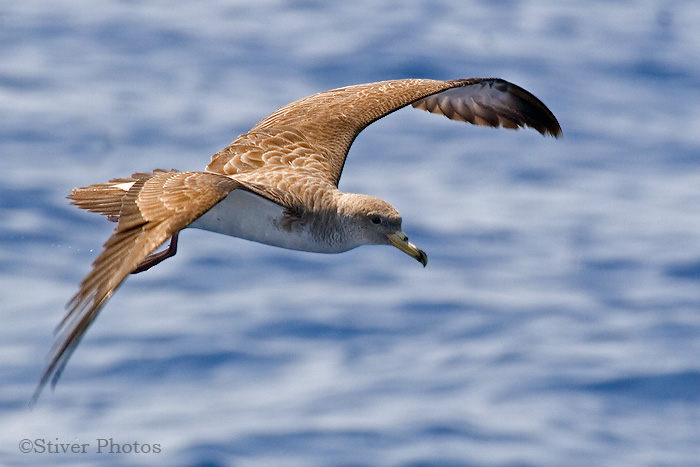
Calonectris diomedea
TAXONOMY
Procellaria diomedea Scopoli, 1769, no locality: Tremiti Islands,
Adriatic Sea.
OTHER COMMON NAMES
English: Mediterranean/(North) Atlantic shearwater; French:
Puffin cendrй; German: Gelbschnabel-Sturmtaucher; Spanish:
Pardela Ceniciera.
PHYSICAL CHARACTERISTICS
17.7–18.9 in (45–48 cm); 19.8–33.7 oz (560–956 g); wingspan
39.4–49.2 in (100–125 cm). Heavy bodied. Uniformly pale underneath,
with darker gray/brown plumage above; yellow bill.
Has lighter cap than the similar greater shearwater.
DISTRIBUTION
Breeds on islands in the eastern North Atlantic and Mediterranean,
migrates across the equator to South Atlantic and Indian
oceans.
HABITAT
Marine, nesting on barren offshore islands away from mainland.
Nests on rocky slopes, on cliffs, or in caves.
BEHAVIOR
Cory’s shearwaters fly with a slower, more relaxed wingbeat
than do other shearwaters.
FEEDING ECOLOGY AND DIET
Feeds mainly at night on fish, squid, crustaceans, and offal by
plunging and surface-seizing. Follows fishing boats.
REPRODUCTIVE BIOLOGY
Breeding season starts in April. Nests in natural nooks such as
burrows or rock crevices. The single white egg is incubated for
54 days. The brown chicks are brooded for approximately four
days, fledging after 97 days. Sexual maturity at seven to 13 years.
CONSERVATION STATUS
Not threatened.
SIGNIFICANCE TO HUMANS
Regarding the awesome sight of migrating Cory’s shearwaters,
the Stuarts wrote in Birds of Africa: “Those that breed in the
Mediterranean move in from the Atlantic at a rate of some
3,600 birds per hour through the Strait of Gibraltar. At the
end of the breeding season when the adults and young birds
depart for their overwintering grounds in the open ocean, they
stream through the Strait in October to November at an estimated
rate of 26,272 each day.”
Photo Gallery of - Cory’s shearwater




 Animalia Life
Animalia Life